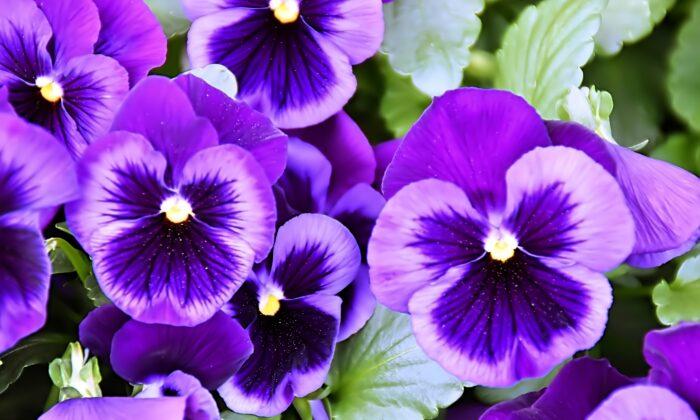Thanks to Valentine’s Day, February is known as the month for love; and so, you might guess that roses are the dominant floral gifts during this shortest month of the year. However, long before the lovers’ holiday, and even before St. Valentine himself, another flower had a history in both myth and everyday life—violets.
Characteristics
Violets are a flowering plant of the genus Viola, which includes 525 to 600 species. They can grow from early spring all the way to late fall. They will also self-seed, so planting them once can give you years of blooms to look forward to.Violets are edible and have been consumed for millennia, dating as far back as ancient Greece, where they were used in food, wine, and medicine. As a culinary ingredient, the plants were used as thickeners, tossed raw into salads, or cooked like spinach. They were also candied, boiled for dye (which was often applied to fabrics), or used to give color and scent to perfumes.
Native Americans also used violets: medicinally in poultices for headaches, or by soaking the roots and seeds to create primitive pesticides.
Symbolism
The violet, as a birth flower for the month of February, symbolizes truth and loyalty, along with a sense of modesty, wisdom, and humility. As a birth month flower, however, the iris shares February—just in case you were wondering. And the iris has also played a part in various mythologies and religions.Violets in Christian art:
“Niall Mac Coitir sees a Biblical connection, since the flowers ‘were said to have sprung from tears shed by Adam after his banishment from the Garden of Eden.’ Some also believe violets bloomed when the angel Gabriel told Mary she was pregnant. At the point when she said, ‘Behold, I am the handmaid of the Lord,’ the violet blossomed. Some still call it Our Lady’s Modesty as a result. The violet often represents Mary’s humility, in Christian art.” —Icy Sedgwick (IcySedgwick.com)In Greek mythology, the goddess Artemis’ brother Apollo, known for his promiscuity, chased one of her nymphs (woodland spirits). This might not have been an issue, since nymphs are normally promiscuous as well; but Artemis’ nymphs had all taken vows of chastity, as she herself was a chaste goddess. And so, to protect this nymph, Artemis turned her into a flower—the violet.





